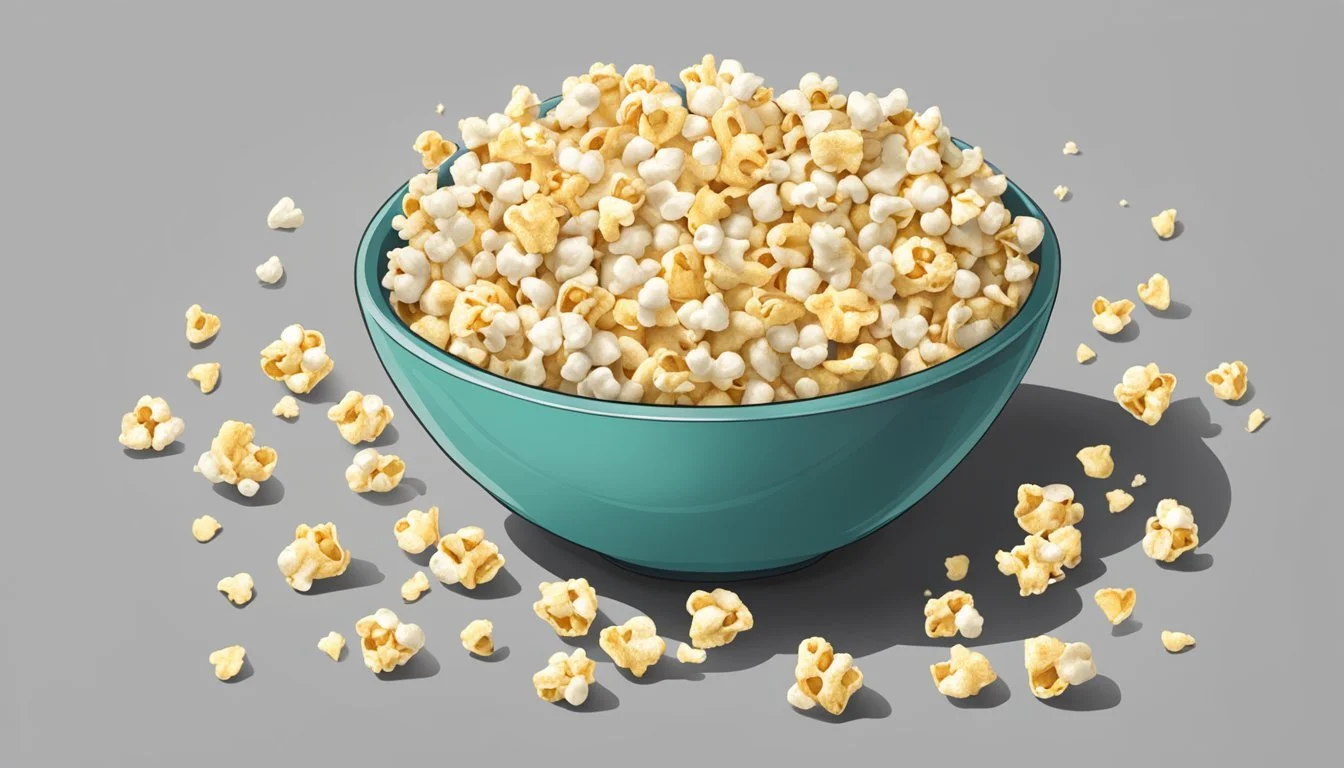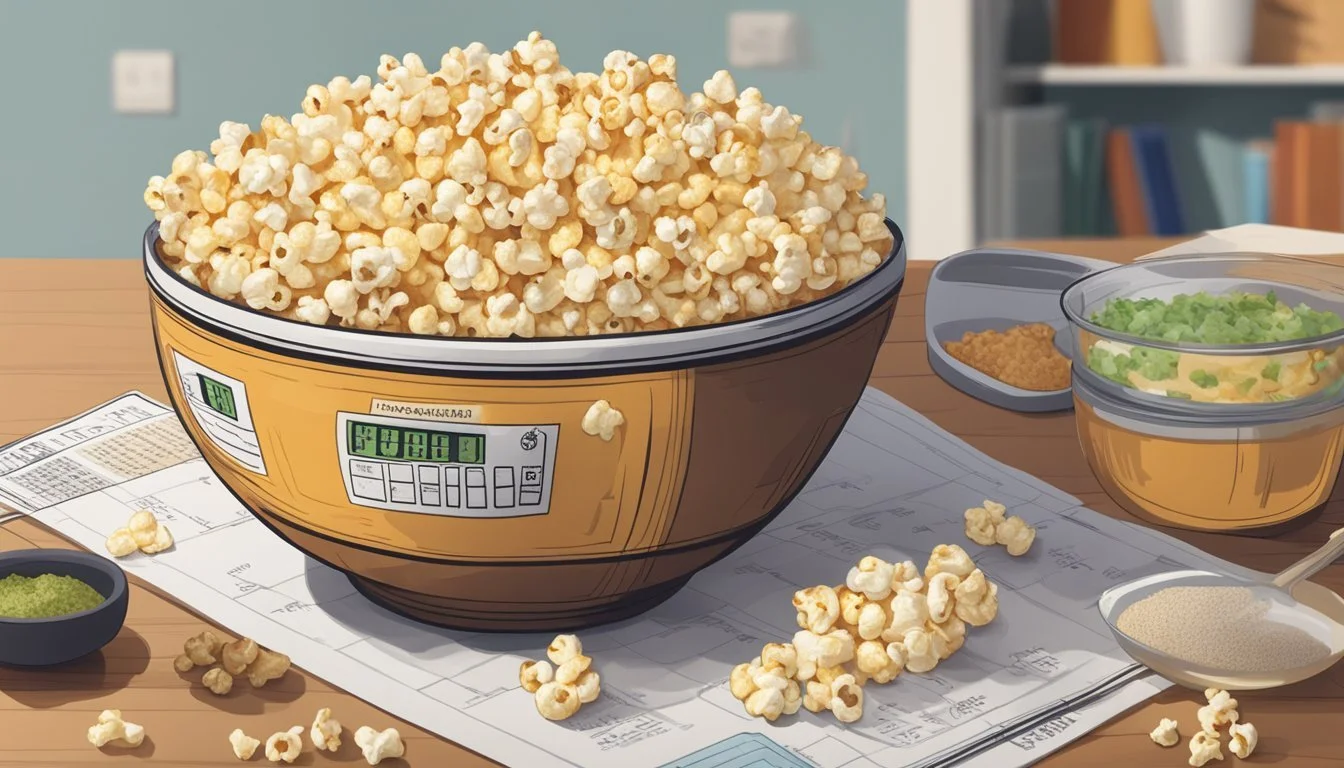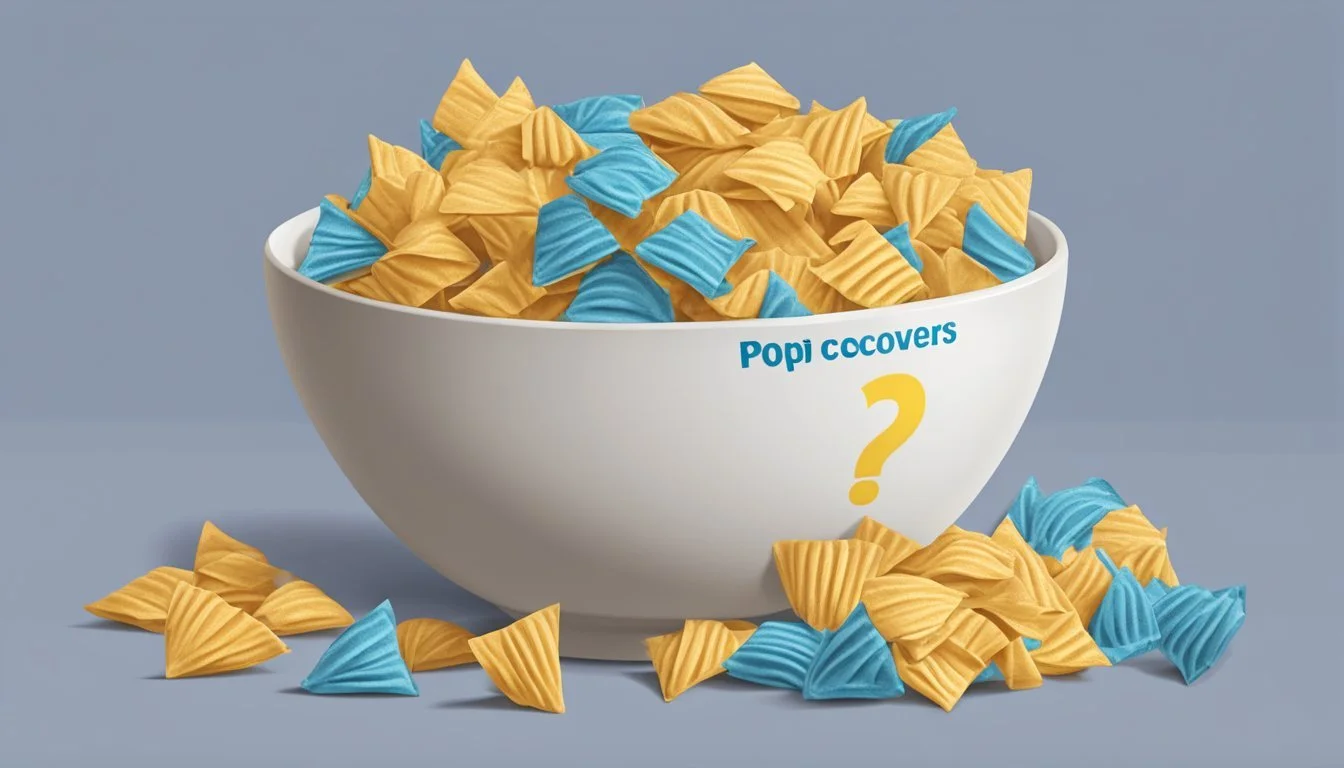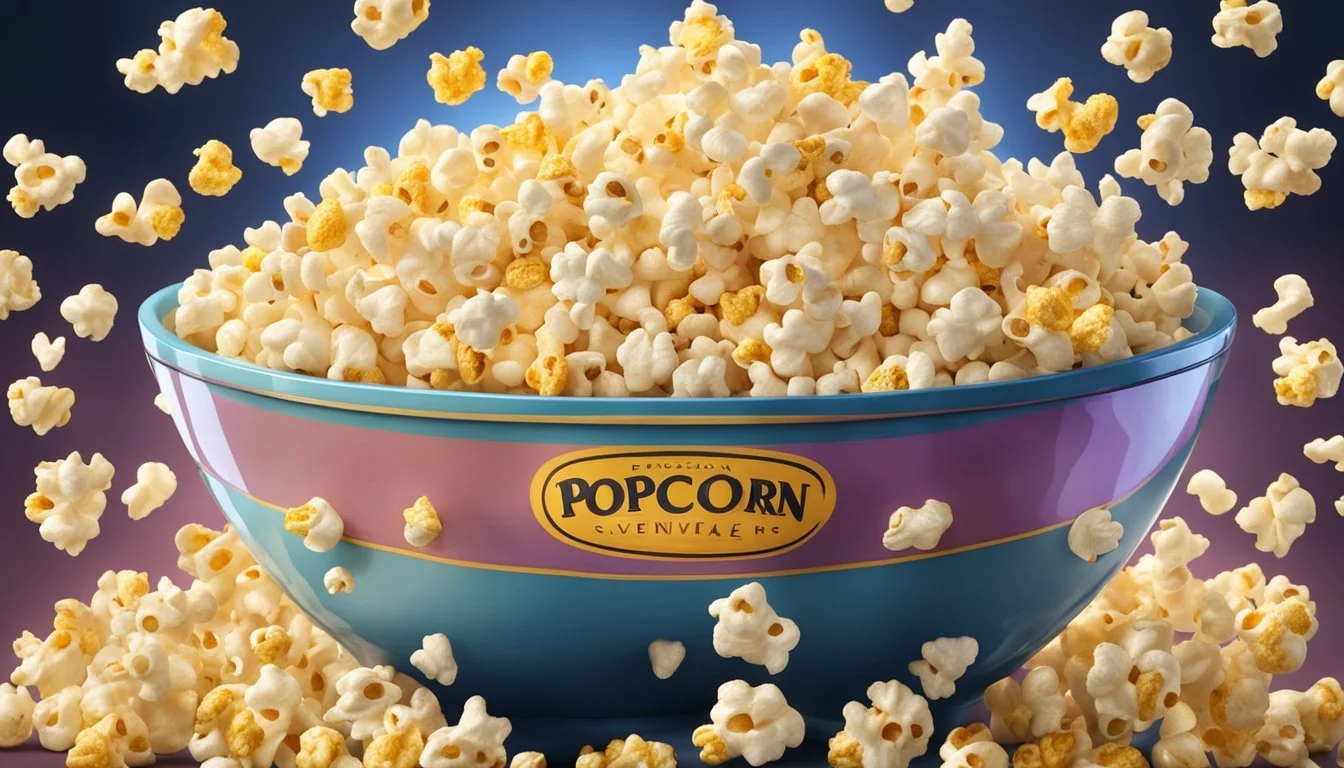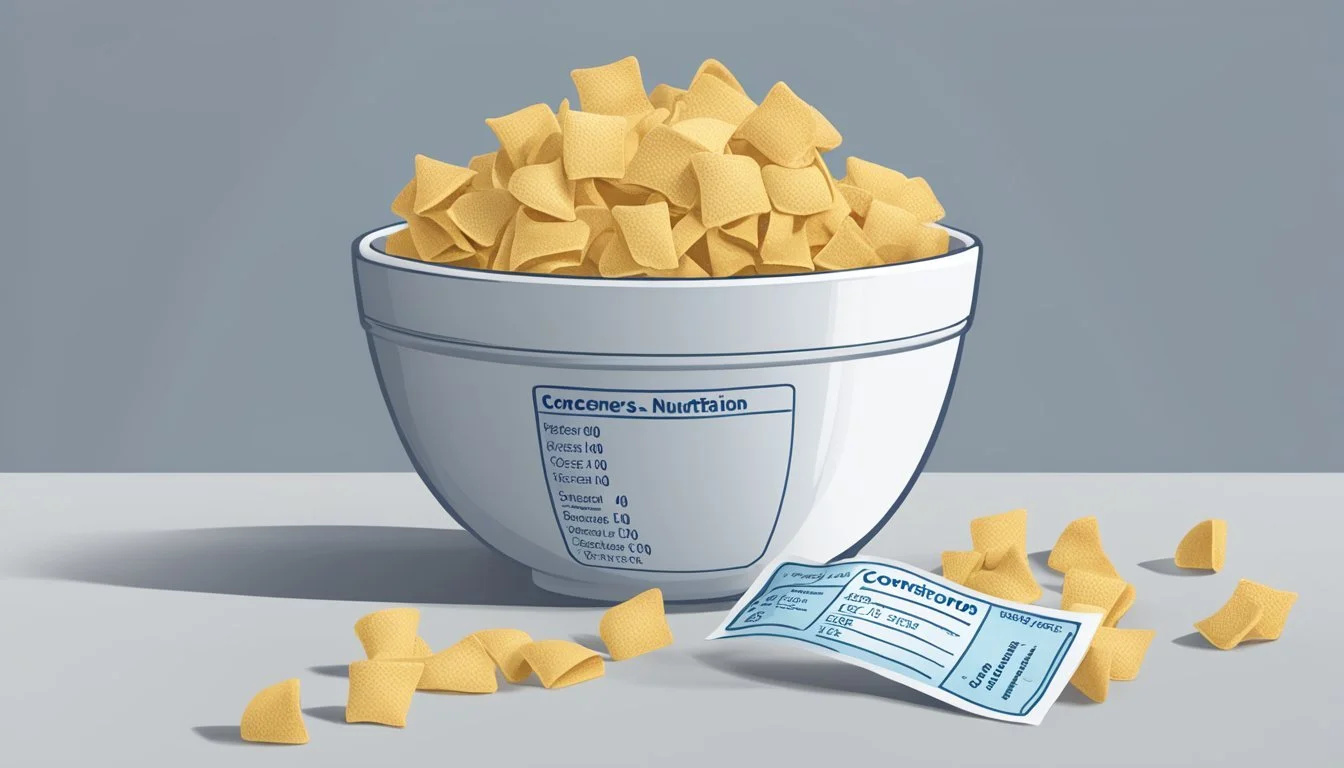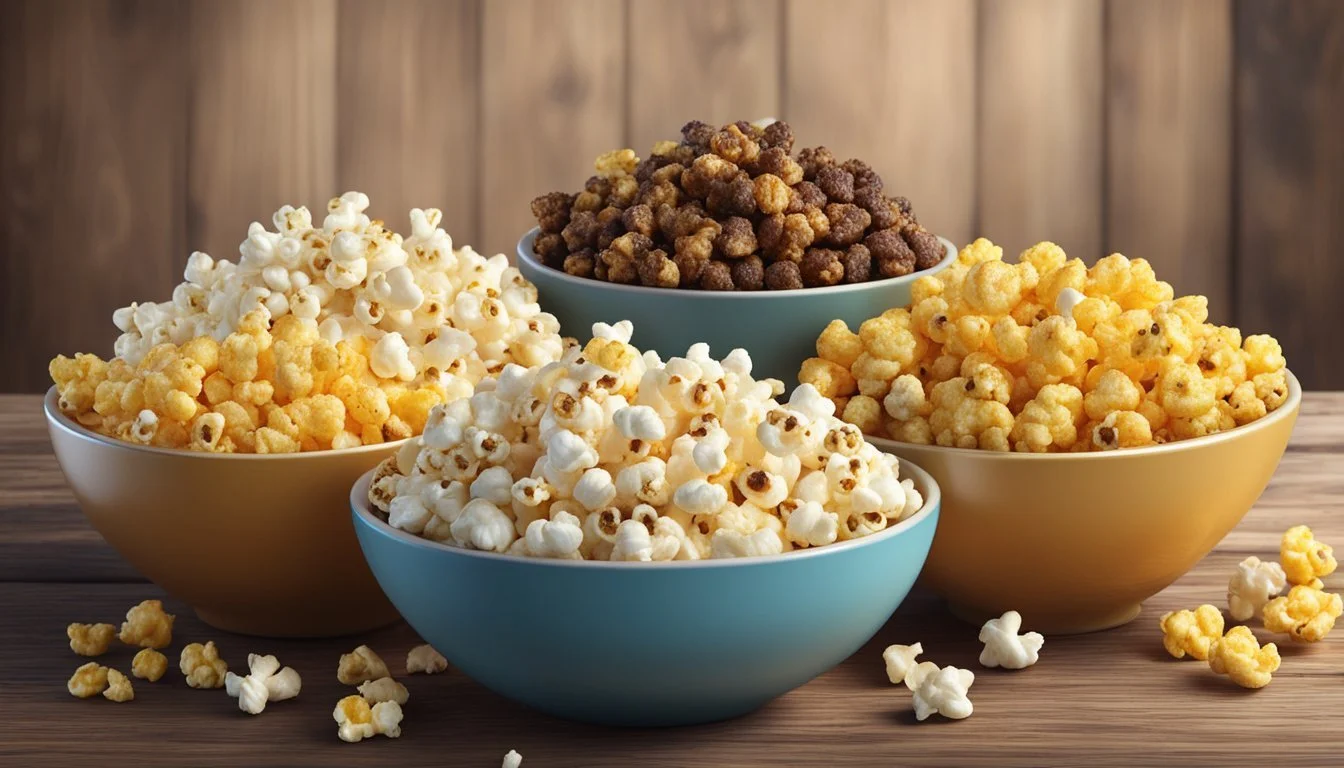How Many Servings of PopCorners Is Too Much
A Nutritional Analysis
Popcorners have become a popular snack choice for those seeking a tasty and somewhat healthy option. Unlike traditional popcorn, which can vary widely in caloric content based on preparation, Popcorners offer a more controlled serving size. Each serving typically ranges between 16-28 grams, containing 80-140 calories.
When considering how many servings of Popcorners are too much, moderation is crucial. Consuming more than two to three servings in one sitting can quickly add up in calories, potentially hindering weight loss efforts and straining your daily caloric intake. While they are a better alternative than some other snack options, sticking to the recommended serving sizes ensures you reap the benefits without the downsides.
Incorporating Popcorners into a balanced diet involves understanding portion control and enjoying these snacks without overindulging. They can be part of a healthy snack regimen if consumed mindfully, fitting well into moderated eating habits. Focus on enjoying the flavor and crunchy texture without consuming them excessively, keeping your snack choices both enjoyable and diet-friendly.
Understanding Popcorn as a Snack
Popcorn is a versatile and popular snack that comes in various forms and offers different nutritional benefits, which depend largely on how it’s prepared.
Popcorn Varieties and Cooking Methods
Air-popped popcorn is often regarded as the healthiest option. Prepared without oil, it is low in calories and free from added fats and sugars. This method results in a light, crunchy snack that retains much of the popcorn's natural fiber content.
Microwave popcorn is another prevalent option. These pre-packaged servings often contain added oils, salt, and artificial flavorings, which can increase the calorie count and fat content. While convenient, it's essential to look at the ingredient list to avoid unhealthy additives.
Movie theater popcorn is typically prepared with butter and oil, contributing to a higher calorie and fat content. The generous use of additives makes it a less healthy option compared to home-prepared varieties. Despite its appealing flavor, it's crucial to be mindful of portion sizes when indulging in this type.
Nutritional Value of Popcorn
Popcorn is naturally whole grain, providing a good source of fiber. A typical serving of air-popped popcorn (about 3 to 4 cups) offers a satisfying snack with minimal calories. Fiber is beneficial for digestion and helps maintain a feeling of fullness, making popcorn a smart choice for weight management.
Popcorn also contains antioxidants like polyphenols, which can contribute to overall health. It includes a mix of vitamins and minerals, such as magnesium, phosphorus, and manganese. These nutrients support various bodily functions, from bone health to metabolism.
While air-popped popcorn is low in calories and fat, added ingredients in microwave and movie theater popcorn can increase the calorie and fat content significantly. It's essential to be aware of sugar and unnatural oil additives that can compromise its health benefits.
For a balanced diet, consider the preparation method to maximize popcorn's benefits, ensuring it remains a nutritious and enjoyable snack.
Health Benefits and Risks of Popcorn
Popcorn, especially when air-popped and eaten without added butter or sugar, provides numerous health benefits. Yet, it is important to note the potential risks, such as increases in sodium and saturated fat when toppings are used.
Heart Health and Popcorn
Popcorn is a whole grain, making it a nutrient-rich snack that can have positive effects on heart health. It contains fiber, which helps to reduce cholesterol levels and thus lowers the risk of heart disease.
Additionally, the antioxidants found in popcorn may contribute to reduced inflammation, which is a key factor in cardiovascular problems. Consuming air-popped popcorn with minimal salt and no butter is recommended to avoid excess sodium and saturated fat.
Popcorn's Impact on Weight Management
Popcorn can be a beneficial snack for those looking to manage weight. A serving of air-popped popcorn contains a low number of calories and a significant amount of fiber, which promotes feelings of fullness and reduces overall calorie intake.
The complex carbohydrates in popcorn provide a steady source of energy without causing rapid spikes in blood sugar. It is crucial to avoid variants with added sugars and fats, which can negate these benefits.
Connection Between Popcorn and Diabetes
The fiber content in popcorn may help in managing blood sugar levels by slowing the absorption of carbohydrates. This can be advantageous for individuals with diabetes or those at risk of developing the condition.
Popcorn also has a relatively low glycemic index, meaning it does not cause rapid spikes in blood sugar. When prepared without excessive butter, salt, or sweeteners, it remains a smart snack option for blood sugar control.
Popcorn can be a healthful addition to a balanced diet if consumed in moderation and prepared simply.
Serving Sizes and Recommendations
When considering Popcorners as a healthy snack option, it's essential to pay attention to portion sizes and caloric intake. This ensures that one can enjoy the snack without compromising their dietary goals.
Determining the Right Portion
Popcorners come in various flavors and packaging, but the standard serving size is typically around 1 oz (28g).
Based on nutritional guidelines, 1 serving equates to about 2-3 cups of Popcorners. This portion is manageable and satisfying for most individuals. Eating straight from a large bag can lead to unintentionally consuming multiple servings, so it's advisable to measure out portions.
In terms of moderation, having 1-2 servings per day can be included in a balanced diet. Providing a satisfying crunch, Popcorners can help prevent overeating other higher-calorie snacks.
Caloric Considerations of Servings
One serving of Popcorners contains 110-140 calories, depending on the flavor. This makes Popcorners a relatively low-calorie snack compared to other fried chips or sugary treats.
However, it's crucial to recognize that calories can add up quickly if consuming multiple servings. For instance, 3 servings could amount to nearly 420 calories, which is significant if weight management is a goal.
To maintain a low-calorie intake while enjoying Popcorners, it’s best to measure portions and limit to no more than the recommended servings. This practice helps maintain the snack as part of a balanced diet without excessive caloric intake.
Factors Influencing Popcorn Consumption
Popcorn consumption can be influenced by various factors such as additives, flavorings, and toppings added to the snacks. These aspects can significantly impact both the healthiness and appeal of the product.
Influence of Additives on Health
Additives can play a significant role in determining how healthy a popcorn product is. Common additives include salt, sugar, saturated fats, and trans fats.
Salt can lead to high blood pressure when consumed in large amounts. Similarly, sugar can increase caloric intake and contribute to weight gain and elevated blood sugar levels. Saturated fats and trans fats are often used to enhance taste but can adversely affect cardiovascular health if consumed excessively.
When considering popcorn consumption, one should pay close attention to the ingredient list. Products with minimal additives are generally healthier. Processed popcorn products may contain additional chemicals and preservatives, which might have long-term health implications.
Role of Flavorings and Toppings
Flavorings and toppings add variety to popcorn, making it more appealing. Common options include herbs, spices, cinnamon, dark chocolate, nut butter, and nutritional yeast.
Herbs and spices not only enhance taste but can also provide health benefits. For instance, cinnamon has been known to help regulate blood sugar levels.
Dark chocolate and nut butter add flavor and healthy fats but can also increase the calorie count. Nutritional yeast offers a cheesy flavor without the added calories or fats of traditional cheese.
To keep popcorn consumption healthy, it is advisable to select toppings that offer nutritional benefits without significantly increasing calorie, sugar, or fat content.
Making Healthier Popcorn Choices
Choosing healthier ingredients and snacking strategies can transform popcorn into a nutritious snack while helping maintain a balanced diet. Here, we focus on selecting the right oils and ingredients and adopting smart snacking habits.
Identifying Healthy Oils and Ingredients
Selecting the right oil is crucial. Olive oil, coconut oil, and avocado oil are excellent choices for popping and seasoning popcorn. These oils contain healthy fats, which are better for heart health compared to traditional butter or vegetable oils.
For toppings, consider herbs, spices, and nutritional yeast instead of high-calorie butter or sugary coatings. These alternatives add flavor without excessive calories. Additionally, using whole grain popcorn ensures a higher fiber and protein content, promoting satiety and aiding digestion.
Air-popped popcorn is the healthiest cooking method as it’s low in calories and fat. Ensure to check the nutrition label when buying pre-packaged popcorn to confirm it aligns with dietary goals.
Smart Snacking Strategies
Portion control is essential to avoid consuming too many calories. Stick to a single-serving size, typically around 28 grams or 1 cup of popped popcorn. Measuring servings beforehand helps maintain caloric intake and supports weight management.
Pairing popcorn with other nutrient-dense foods, such as fruits, vegetables, or lean proteins, can balance the snack and increase satiety. This approach ensures a more fulfilling and well-rounded snacking experience.
Sticking to a consistent snacking schedule can prevent overeating. Integrating popcorn into a planned meal routine allows for enjoyment without excess. By making mindful choices, popcorn can remain a tasty, healthy part of a balanced diet.
Popcorn in Special Diets
Popcorn fits into various special diets due to its low calorie and high fiber content. It can be adapted to meet vegan, gluten-free, and other dietary restrictions, and it can serve as part of a balanced diet when consumed in moderation.
Popcorn for Vegan and Other Dietary Restrictions
Popcorn is naturally vegan, consisting solely of whole corn kernels. It provides a plant-based source of carbohydrates and dietary fiber, making it a suitable snack for those following a vegan diet. When prepared without butter or animal-derived ingredients, popcorn becomes a clean, vegan-friendly snack.
Gluten-intolerant individuals can enjoy popcorn as it is naturally gluten-free. It's important to watch for cross-contamination in flavored or packaged options. Nutritionally, popcorn can be enhanced with healthy fats like olive oil or avocado oil for added flavor without compromising dietary restrictions. Seasoning with spices or nutritional yeast can add a savory touch while keeping the snack vegan and gluten-free.
Popcorn as Part of a Balanced Diet
Incorporating popcorn into a balanced diet can be achieved by managing portion sizes and pairing it with other nutrient-dense foods. Popcorn is a whole grain, offering significant amounts of dietary fiber, which is essential for digestive health. A standard serving of plain popcorn provides a low-calorie, high-fiber snack that can promote satiety between meals.
Combining popcorn with healthy fats like nuts, or adding a side of fresh vegetables, can make a more balanced snack. This creates a combination of protein, fiber, and healthy fats, all essential for maintaining energy and fullness. To maintain a balanced diet, it's crucial to limit added salt, sugar, and butter, ensuring that popcorn remains a healthful inclusion in one's diet.
DIY Popcorn: Homemade Options
Making popcorn at home allows for customization of flavors and helps ensure a healthier snack. The main methods include air-popping, stovetop cooking, and using a popcorn maker.
Home Popping Techniques
Air-popping is a popular method. It involves using a hot air popper, which circulates hot air to pop the kernels. This method requires no oil, making it a low-calorie option. Simply add kernels to the popper, turn it on, and wait for the fluffy popcorn to collect.
Stovetop cooking involves heating oil in a deep pan and adding popcorn kernels. After a few minutes, the kernels will start to pop. This method allows for the use of healthier oils like coconut or olive oil.
Popcorn makers offer another option. These devices can be electric or stovetop models. They combine the advantages of both air-popping and stovetop methods, providing a convenient and efficient way to make popcorn.
Healthy Popcorn Recipes
Healthy recipes frequently start with plain popcorn made using the methods above. For a nutritious snack, consider adding minimal additives and flavors.
Lightly sprinkle sea salt or nutritional yeast for a boost in flavor without added calories.
Herbs and spices like paprika, garlic powder, or cinnamon can provide a unique twist.
Healthy fats, such as a small amount of melted coconut oil or olive oil, can add richness.
Popcorn is high in fiber, which supports digestion, and can be a satisfying and filling snack. By controlling the cooking method and the ingredients, homemade popcorn remains both healthy and affordable.
Understanding Food Labels and Popcorn
Reading and interpreting food labels is essential for making informed dietary choices.
Serving Sizes
For foods like popcorn, labels typically list serving sizes as three tablespoons unpopped or five cups popped. This helps consumers gauge how much they are consuming at a time.
Calories and Fat
Popcorn labels usually include caloric information and fat content. For instance, one serving of plain, air-popped popcorn can have around 30 calories and minimal fat. In contrast, varieties with added butter or oils may contain significantly more calories and fat.
Nutritional Value
The nutritional value of popcorn varies based on preparation. Plain popcorn is low in calories and fat but adding toppings like butter increases these. Popcorners, a popular snack, have calories ranging from 110 to 140 per serving, depending on the flavor.
Importance of Labels
Food labels provide critical information. Here’s what to look for:
Calories: Indicates energy content.
Fat: Differentiates between saturated, unsaturated, and trans fats.
Ingredients list: Reveals any added sugars or preservatives.
Practical Tips
Check Serving Size: Knowing the serving size helps control portion intake.
Monitor Calories: Helps in managing dietary goals.
Look at Fat Content: Understanding the type of fat is crucial for heart health.
Reviewing food labels thoroughly ensures a balanced and informed diet.
The Cultural and Historical Significance of Popcorn
Popcorn has a rich history that dates back to pre-Columbian times when indigenous peoples of the Americas cultivated corn around 8700 B.C.E. Early cultivation practices laid the groundwork for the widespread use of this grain.
In the late 1920s, popcorn's popularity in movie theaters began to rise. Theater owners initially resisted selling it due to concerns about messiness. Enterprising vendors capitalized on this by setting up popcorn stands outside theaters.
During the Great Depression, popcorn became an affordable snack for many. Its low cost and satisfying nature made it a popular choice during tough economic times.
Popcorn also gained a reputation for being a healthier snack. Various health organizations, including the American Heart Association, have noted that when prepared without excessive butter and salt, popcorn can be part of a heart-healthy diet.
Key Points:
Early Origins: Cultivated by pre-Columbian indigenous peoples.
Movie Theater Staple: Gained popularity in the late 1920s.
Economic Choice: Affordable during the Great Depression.
Health Benefits: Recognized by organizations like the American Heart Association.
Popcorn's journey from an ancient snack to a modern favorite highlights its enduring appeal in various cultural contexts.


